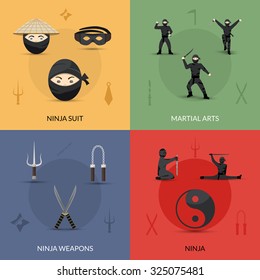The Chronicle And Growth Of Martial Arts: An Examination Of Its Historic Beginnings And Advancement Into Modern Techniques
The Chronicle And Growth Of Martial Arts: An Examination Of Its Historic Beginnings And Advancement Into Modern Techniques
Blog Article
Article Composed By-Vilhelmsen William
Enter the world of martial arts, where ancient origins and modern techniques clash in an exhilarating journey of discipline and self-discovery.
As you delve into the history and development of this exciting art kind, prepare to be mesmerized by the cultural impacts, technical advancements, and extensive approach that have shaped it over centuries.
From the battlefields of ancient human beings to the training grounds these days, martial arts have stood the test of time, regularly adapting and expanding.
Each strike, each motion, brings with it the weight of many years of tradition and knowledge, gave through generations. This is a story of resilience, of warriors who looked for not just physical expertise, but likewise inner strength and harmony.
Join us on this impressive expedition as we uncover the secrets, the legends, and the transformational power of martial arts.
Prepare yourself to be influenced, challenged, and permanently transformed by the history and evolution of martial arts.
Cultural Influences on Martial Arts
As you discover the background and evolution of martial arts, you'll rapidly discover the interesting methods which social impacts have formed these battle methods.
From the ancient people of China and India to the more recent developments in Japan and Brazil, martial arts have been heavily affected by the societies in which they came from.
For example, Chinese martial arts, such as Martial Art and Tai Chi, are deeply rooted in the viewpoint of Taoism and the principle of Yin and Yang.
In contrast, Japanese martial arts, like Martial arts and Judo, reflect the samurai warrior traditions and the worths of discipline and honor.
Likewise, Brazilian fighting style, Capoeira, incorporates aspects of African dance and songs, mirroring the cultural heritage of African slaves in Brazil.
https://www.middletownpress.com/opinion/article/Opinion-Martial-arts-Is-it-really-just-about-17168409.php provide each fighting style its one-of-a-kind attributes however additionally supply a deeper understanding of the historic and social contexts in which they advanced.
Technological Innovations and Martial Arts
With the surge of advanced weapons and cutting-edge training tools, you've been able to improve your abilities and adapt to the ever-changing battle landscape.
Technological developments have actually changed the means martial arts are exercised and educated. Virtual reality simulations currently permit you to learn realistic fight circumstances without the threat of physical damage. High-speed electronic cameras record every move, enabling you to analyze and excellent your techniques. Wearable devices monitor your heart rate, breathing, and muscular tissue activation, offering immediate responses on your performance.
Furthermore, the advancement of specific equipment, such as resistance bands and agility ladders, has allowed you to improve your rate, stamina, and agility. These technological developments have not only made training much more reliable yet have actually additionally pressed the borders of what is feasible in martial arts, enabling you to get to new heights in your practice.
The Viewpoint and Principles of Martial Arts
The viewpoint and principles of martial arts are deeply rooted in shaping your state of mind and instilling self-control, focus, and respect in your technique.
1. Mindset: Martial Arts educates you to develop a strong and resistant frame of mind. It enables you to conquer challenges both on and off the mat, pressing your limits and persisting in the face of hardship.
2. Technique: Martial Arts demands discipline and self-discipline. With a fantastic read and adherence to rigorous policies and methods, you discover to regulate your impulses and develop a solid work values.
3. Emphasis: Martial Arts needs intense emphasis and concentration. By educating your mind to be present in the moment, you enhance your capability to react rapidly and successfully during battle circumstances.
4. Respect: Martial Arts emphasizes respect for oneself, teachers, educating companions, and challengers. It instructs you to value the skills and experiences of others, promoting a sense of camaraderie and gamesmanship.
Conclusion
Congratulations on completing your trip with the captivating world of martial arts! Throughout this exploration, you have actually experienced the abundant history and impressive development of these combat techniques.
From their old origins to the modern techniques we see today, martial arts have been shaped by cultural impacts.
The integration of technology has also played a significant duty in transforming the means martial arts are instructed and practiced in the here and now day.
However, it is very important to remember that martial arts are greater than just physical battle. They include profound approaches and assisting concepts that surpass the simple act of battling.
Take a moment to assess this anachronistic journey and value just how the heritage of martial arts continues to flourish in today, going beyond time and limits.
